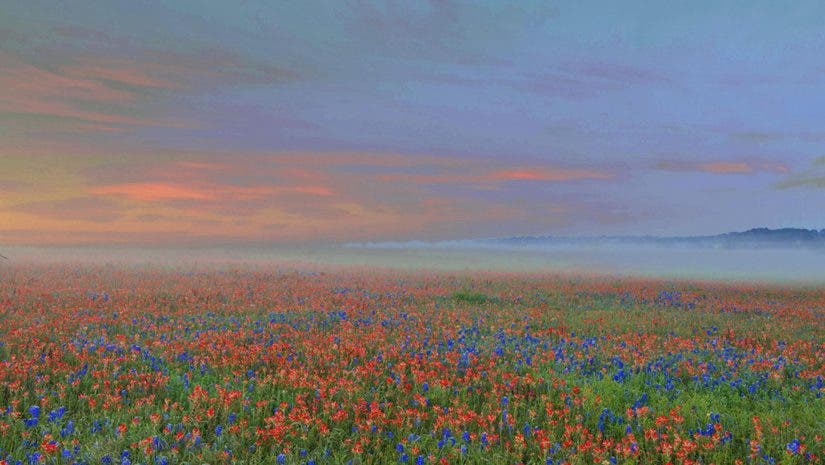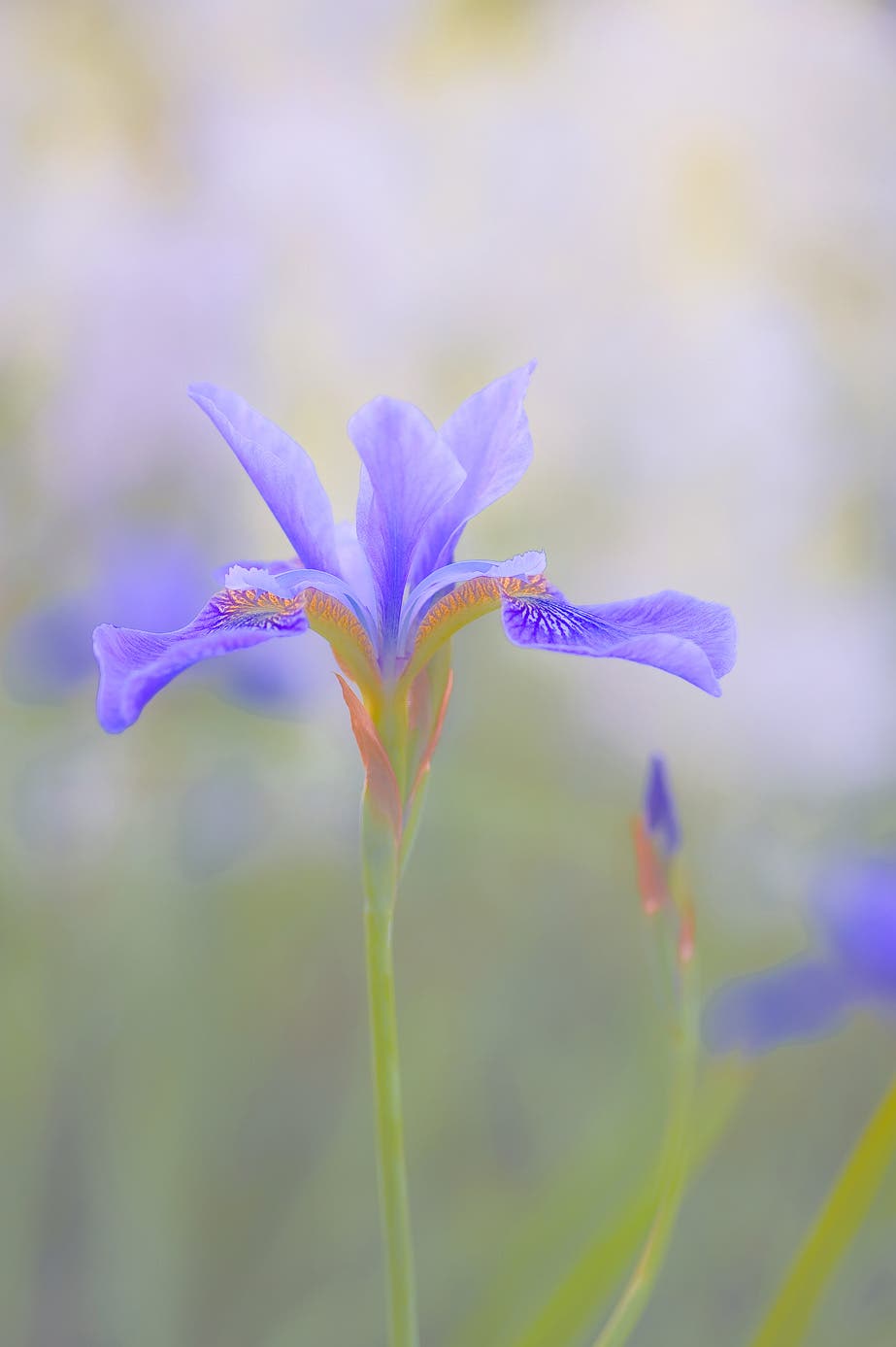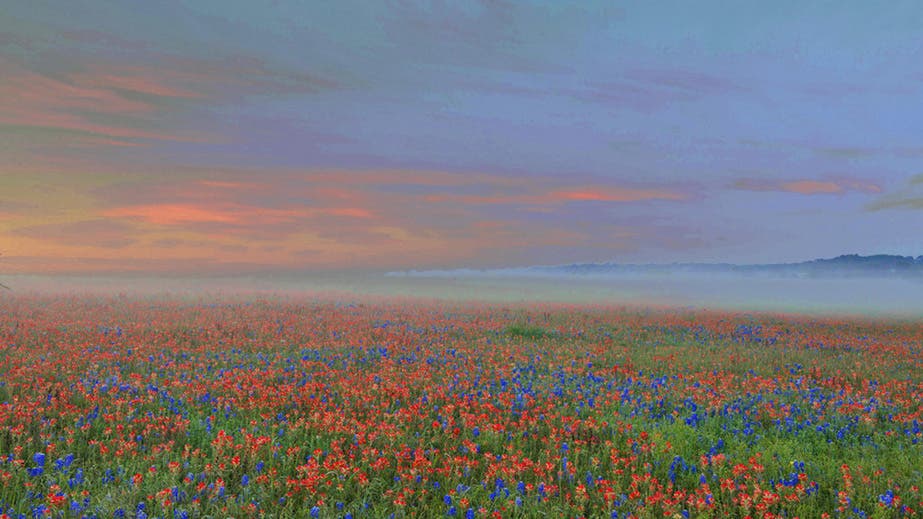Flowers are so inherently beautiful that it takes extra effort to create a photograph that is even more striking than the flower. When I began photographing flowers, I basically took what I call “floral mugshots.” They were reasonably accurate but they didn’t say “Wow!” Gradually, I learned how to take better images of flowers.
One of the most important things I realized is that the flowers are just one element of the image; the rest are its surroundings, especially their backgrounds. How you handle those backgrounds can make the difference between a dull and a divine shot.In this article, I’ll discuss a variety of situations you’re likely to encounter in your flower photography and how you can best handle them using your DSLR.
Floral close-ups: Whether you’re shooting in a garden or in nature, close-ups demand a really excellent floral specimen in uniform light set against a simple background of a complimentary or contrasting color. This takes not only technique but artistry. Look at the flowers you have in mind
carefully to find one without blemishes. Then check the background for light, color and distance — ideally, the background should be at least one foot behind the flower. If the background has splotchy light or is too close or distracting, see if you can find another good floral specimen with a better background.
Once you’ve found the best possible flower and setting, you’ll generally want to blur the background so it becomes a simple wash of color that sets your flower off beautifully. There are a few ways to do this. The simplest way is using a macro lens, which is designed to focus in very close to the subject, which helps blur the background. There are macro lenses in the 50-60mm range, 90-110mm range and 180-200mm range — all readily available for any camera. The longer the lens, the more it will throw the background out of focus. However, I recommend the middle option because it’s the most versatile, less heavy and less expensive.
Other options? Walk around your subject to see if a perspective from the side or the rear allows you to create an effective background. If you can’t work with the background in any way, see if you can find a flower that’s backlit so the bright light will frame and set off your subject. Or comein super close so the background is completely eliminated (just make sure your camera is very steady or use a tripod).
Can’t afford a macro lens? I’ve worked with screw-on close-up lenses and extension tubes with excellent results. Using them especially with a wide open 50mm 1.4 lens produces a lovely blur. You can also use screw-on lenses with telephoto lenses in the 100 to 200 mm range.
For maximum sharpness on the flower, you’ll probably want to set your aperture at f/8 to f/11 and work with the automatic shutter speed. If the flower is moving, try to catch it at a moment when it is still and shoot with a shutter speed of 1/250 sec. or faster. If a fast shutter speed forces you to use a wider aperture, you can push your ISO up to 1000 or more so you can get the flower sharp.
Flowers in their environment: Often enough, we want to show flowers in their garden setting or their natural environment. The challenge here is to find the right balance between the flowers and their surroundings.
A good garden designer will place a patch of flowers in relation to others at either side or from front to back. These combinations are part of the allure of gardens. Revealing those relationships is a good way to begin.
For such shots, select a segment of the garden that appeals to you.
Look for lines that carry your eye from your primary subjects into the surroundings. Those lines can be the edge of a border, a nearby winding path or a horizontal layering of plantings. Even interesting combinations of textures can serve as the unifying element in your composition.
If you are in a well-known garden and want to include an identifying feature, find a perspective that allows you to combine the flowers with the background feature. Again, look for lines that will draw the eye from the foreground floral subjects to the background feature.
In nature, the task is a bit more complex. Start by identifying flowers that will create a strong foreground element. Try to find flowers that don’t overlap but stand out individually. Then, find an angle that will show the flowers and their setting. For example, wildflowers can be set against a mountain backdrop. You’ll need to get down low and fairly close to create such a composition.
For maximum sharpness throughout, use a wide-angle lens and a small aperture — between f/11 and f/16. Then focus 1/3 of the way into the frame. If you prefer a softened background — just a hint of the conservatory or the hills — use a wider aperture and a normal or telephoto lens.
Floral landscapes: When I take students on flower photography workshops, I often select locations that have masses of flowers. Such floral landscapes are among the most exciting sights to see. In fact, it’s hard to know where to turn first with so much beauty to look at.
First, it’s essential to look for elements that help you organize your composition. These can be straight or curved lines, repeated patterns or arrangements of color that animate your image. Instead of viewing the scene in terms of flowers, view them as abstractions that you can create through careful framing.
Also, decide whether you want a sense of depth or prefer a flat, two-dimensional presentation. To create depth, look for receding lines, show a size differential with smaller flowers in the distance, or capture a contrast in color as far-off flowers appear lighter or darker. A wide-angle lens with its greater depth-of-field can help you create such a sense of depth. But I rarely use a lens that’s wider than 24mm.
A flat presentation may seem unnatural at first, but it’s one of my favorite ways of shooting floral landscapes. What I like is the ability to concentrate color, emphasize shapes and view the scene more abstractly, all helped by the use of a telephoto lens, which compresses space.
I also try to take shots of the floral landscape early or late in the day when I can use low-angled sidelight or backlight to enrich colors and bring out the shapes of flowers. In bright sunlight or on overcast days, focus on the colors — saturated and rich in the former and soft and pastel in the latter — and use a telephoto lens to isolate parts of the floral landscape.
Isolating flowers: There may be times, especially in nature or in a floral landscape, when you want to separate a group of flowers from their surroundings. This is a wonderful way to soften, blur or eliminate the background. It also can create a very aesthetic way to portray flowers.
For this kind of image, I generally work with a 100mm-200mm macro lens because it allows me to get close, magnifies the subject and limits the depth-of-field. If you’re working from some distance to your subject, you can use a telephoto lens and a wide aperture.
A variation on this technique is what I call a “shoot through.” This entails isolating one or more flowers in the middle ground by blurring out the foreground as well as the background. Again, you’d want to work with a telephoto lens and a wide aperture. Just focus very carefully on the middle slice that you want to keep sharp.
These techniques should help you fine tune your flower photography. But remember that technique always follows vision and it’s your ability to see an image in your mind’s eye that should guide you toward techniques that will enable you to create it. The main point is that you must look beyond the flowers themselves to make effective images. Whatever is within your frame should serve your aesthetic purpose and you are the one who decides what you want to include and how you want to represent it.




















